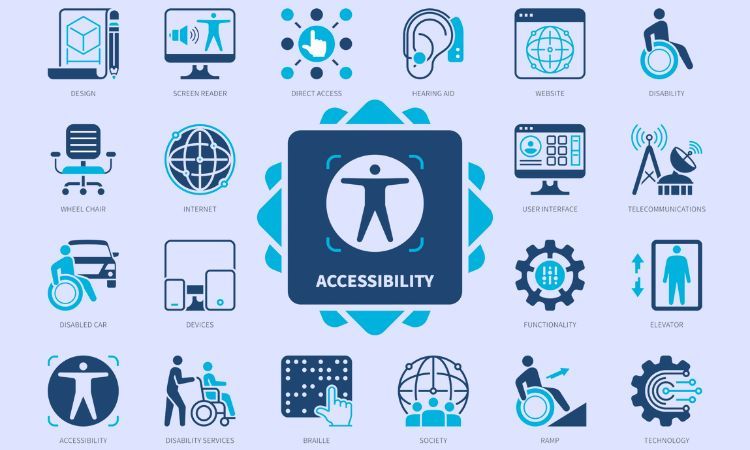What is web accessibility? By now, everyone with a website should be aware of the website accessibility rule added to the Americans with Disabilities Act (ADA) in April 2024. If not, then this blog is for you. Businesses are now legally required to ensure their website and digital content are accessible to people with disabilities. Using various tools and enhancements, web designers create accessible websites by incorporating features such as descriptive alt text for images, which helps users with visual impairments understand the content. Ensuring compliance avoids legal penalties, broadens your audience, and shows your brand’s commitment to inclusivity.
The Basics of Web Accessibility
So, what exactly is web accessibility? It refers to designing and developing websites that allow all users, regardless of their abilities or disabilities, to access and interact with content effectively. This includes users with visual, auditory, motor, or cognitive impairments. The goal is to eliminate barriers and create an inclusive online experience.
How Does a Web Designer Make it Accessible?
![]()
A web designer creates specific web accessibility designs that enable people with diverse abilities to use all devices. This includes incorporating features such as clear and straightforward navigation, clear contrast between text and backgrounds, and alternative text for images. Designers also follow standards such as the Web Content Accessibility Guidelines (WCAG) to ensure all content is perceivable, operable, and understandable.
Once a website has been made accessible, many designers include a web accessibility icon on the screen. Some use it to simply signify that the site is accessible, while others make it interactive, leading visitors to accessibility settings or options.
Standard Enhancements Made to Support Users with Various Disabilities

The following are some examples of the types of enhancements made to make online content more accessible to users with a wide range of disabilities:
1. Text Alternatives
Providing descriptive alt text for images, icons, and other non-text content so screen readers can convey visual information to users with visual impairments.
2. Keyboard Navigation
Ensuring all website features and controls can be accessed and operated using only a keyboard, supporting users with motor disabilities.
3. Sufficient Contrast and Color
Using high-contrast color schemes and avoiding color-only cues to help users with low vision or color blindness distinguish content.
4. Transcripts and Captions
Supplying text transcripts for audio content and captions for video content to assist users with hearing impairments.
5. Resizable Text
Allowing users to increase font size without disrupting the site’s layout or functionality for improved readability.
6. Consistent Navigation
Maintaining predictable and uniform navigation throughout the site helps users understand the structure and move through pages efficiently.
7. Accessible Forms
Clearly label form fields, provide clear instructions, and ensure that all form elements can be submitted via the keyboard.
8. Avoiding Time-Based Restrictions
Providing options to extend or turn off time-based restrictions, accommodating users who need additional time to complete tasks.
9. Focus Indicators
Visibly highlighting interactive elements when in focus helps keyboard users track their position on the page.
10. Avoiding Flickering Content
Ensure that all displayed content is steady and free from rapid flashes or flickering effects, as such visuals can trigger seizures or distract users.
11. Responsive Design
Ensuring that the website works well on various devices and screen sizes and with assistive technologies.
So, What is Web Accessibility? In a Word: Inclusivity
Web accessibility isn’t just a legal requirement; it’s a fundamental part of building an inclusive digital environment where everyone can access information and services equally. With the ADA’s recent updates, now is the perfect time to evaluate and improve your website’s accessibility.
Let Fat Guy Media ensure your business’s website is inclusive and compliant with our proven adaptive accessibility solutions.


